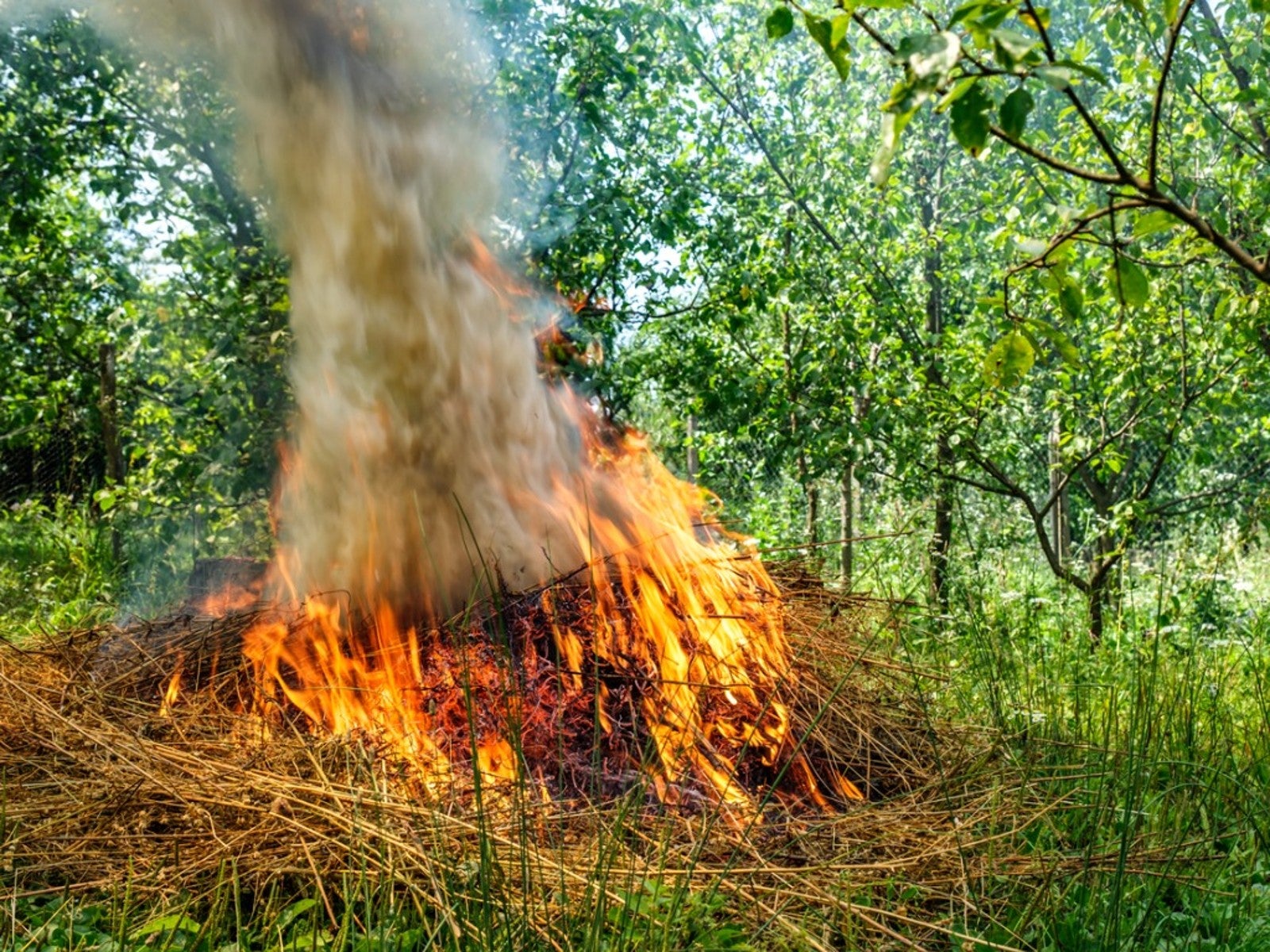Why Burning Leaves And Brush Isn’t A Good Idea


As winter settles into your backyard, some type of cleanup may be required. Leaves die and fall, and brush and brambles need cutting back. In larger areas, small trees may be taken out to clear the land. Then it’s time to deal with the large pile of dead plant material.
One common option for dealing with detritus from the garden involves burning yard waste. However, a brush pile comes with environmental downsides as well, so before you burn brush, consider both sides of the question.
Burning Yard Waste
It’s hard enough to rake up all those fallen leaves in autumn, so thinking up a method of disposing of them is often not given the time the question deserves. Many gardeners saw their parents making and burning brush piles, and a fire certainly seems the fastest and easiest way to go. One match and the deed is done.
These days, though, we know that burning brush carries negative consequences despite providing a rapid solution to the pile of yard debris. More than a few people can be injured during debris pile burns, and the fire can accidentally spread to other areas of the land, burning down trees you intended to keep, or even your house.
Burning Brush Contaminates Air
In addition to potential fire hazards, leaf burning leads to air pollution. Fire from burning leaves and yard debris emits smoke. This smoke can contain particles and gasses that are toxic or at least irritating. They can end up in a person’s lungs and stay there for years, increasing the chance of respiratory infection. Obviously, this also limits the amount of air that arrives in the person’s lungs.
That means that burning a brush pile can be hazardous, especially to those who suffer from breathing disorders like asthma. You’ll get even more smoke if the leaves aren’t fully dry. Leaves that have fallen but are moist from rainfall or sprinklers give off additional smoke containing chemicals called hydrocarbons. These can be – at best – extremely irritating to a person’s eyes, nose, throat, and lungs; at worst, carcinogenic.
Don’t forget about the carbon monoxide that can result from smoldering debris piles. It’s an invisible gas that is absorbed into the bloodstream, limiting the amount of oxygen that red blood cells carry. It is especially dangerous for children and seniors. Open burning in burn barrels often produces this effect since it generates relatively low temperatures that don’t combust materials efficiently.
Gardening tips, videos, info and more delivered right to your inbox!
Sign up for the Gardening Know How newsletter today and receive a free copy of our e-book "How to Grow Delicious Tomatoes".
Better Solutions
In many urban areas, burning brush piles or autumn leaves is not permitted. Instead, the city may encourage leaf bagging and arrange times to collect the bags to dump them in a municipal compost area. Check with your city website or the local waste disposal service.
Those in rural areas can do their own composting by “chopping” leaves with the lawn mower and mixing them with grass clippings or produce scraps. Once the compost is done, it improves the soil in any vegetable garden or flower bed. It’s equally possible to shred the leaves and use them as mulch. Layer up a few inches (8 cm.) of chopped leaves around the base of shrubs and plants.
How to Burn a Brush Pile
If you decide you have to burn a brush pile, try using these tips to keep it safer. If you are only doing light thinning, chopping and scattering may work just fine. If not, can you at least wait a year? Leaving the pile in place for 12 months will allow recuperation of more nutrients into the soil.
When you do burn, watch where you do it. Even the most naïve of gardeners is likely to recognize that burning piles close to trees or homes is a very bad idea. Even in a good location, you’ll do better to build a compact, tall, slender pile to get a more complete burn. Keep coarse woody debris out of the pile. The small stuff ignites and carries a fire more readily.
Finally, be sure you have what you need to keep the burn under control. Be sure you have a shovel, a hoe, and a generous supply of water. Be sensible! Don’t light the fire when there is a lot of wind. The ideal moment is a still day when wet weather is predicted.

Teo Spengler is a master gardener and a docent at the San Francisco Botanical Garden, where she hosts public tours. She has studied horticulture and written about nature, trees, plants, and gardening for more than two decades. Her extended family includes some 30 houseplants and hundreds of outdoor plants, including 250 trees, which are her main passion. Spengler currently splits her life between San Francisco and the French Basque Country, though she was raised in Alaska, giving her experience of gardening in a range of climates.